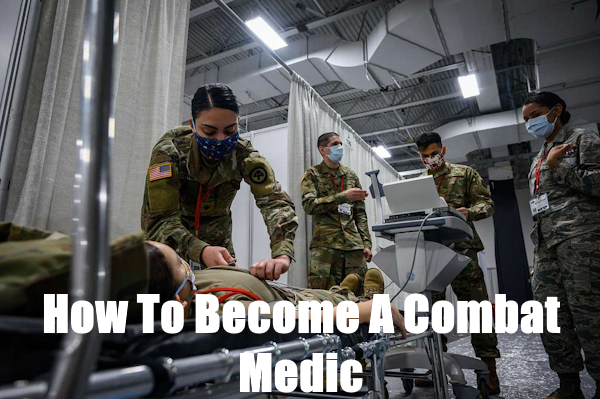Are you wondering how to become a combat medic?
The training and education requirements make it appear like a long road to becoming a medic in the military.
However, with the right mindset and plan of action, it’s more than feasible.
Learn more about what it takes to become a combat medic in the U.S. Armed Forces.
Related Article – 12 Best Military Jobs By Branch
Table of Contents
How to Become a Combat Medic
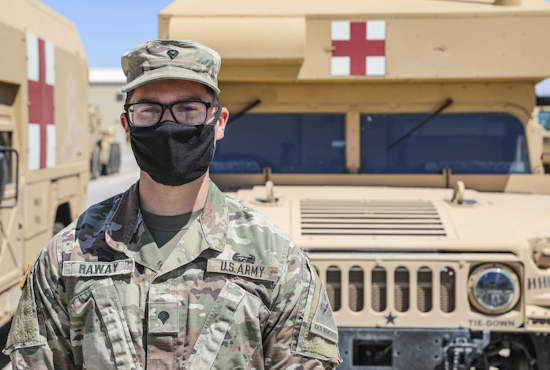
The U.S. Armed Forces consider a Combat Medic Specialist among its most important roles in military service.
Combat medics administer emergency medical care in both humanitarian and combat situations.
As a result, combat medics are military first responders who treat injuries and illnesses, as well as save lives.
Combat medics are the equivalent of paramedics in the civilian world.
As such, medics in the military receive comparable training along with certain specialties related to serving in the military.
So, the skills you acquire studying and training to become a combat medic translate well into civilian employment.
Combat medics stabilize soldiers on the battlefield while also providing long-term care at medical facilities.
For this reason, the area of medical specialization and work setting will define your job role.
Nonetheless, all recruits in the Armed Forces go through the same process in order to become a combat medic.
Generally, the steps to become a combat medic are as follows:
- Meet with a Military Recruiter
- Education & Requirements
- Join the U.S. Armed Forces
- Complete Basic Military Training
- Advanced Combat Medic Training
- Army Combat Medic Specialist Assignments
Combat medics primarily treat the injuries of soldiers in a given unit or station.
Accordingly, U.S. Army Combat Medic Specialists are among the most well-known of all military medical personnel.
These individuals often pursue further education (more information, below) in order to specialize in different medical fields, such as dentistry or orthopedics.
Furthermore, combat medics can also transition into instructors who provide emergency training courses to military personnel.
In general, the scope of responsibilities for a combat medic varies depending on the work setting and role.
Learn more about each step in the process of becoming a combat medic:
#1. Meet with a Military Recruiter
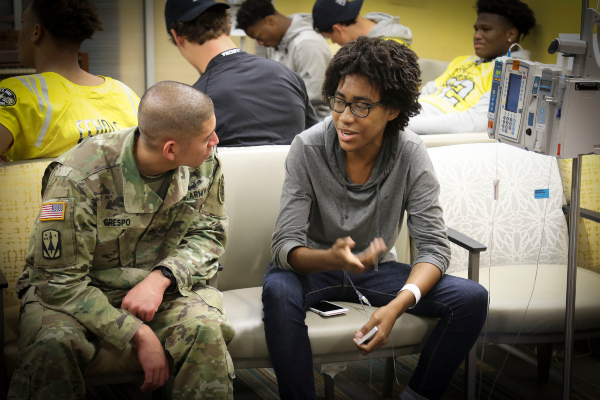
What are the steps required to become a combat medic in the U.S. Army?
First, it never hurts to meet with a military recruiter.
Military recruiters are available in every branch of the U.S. Armed Forces, including the Army.
Therefore, an Army recruiter can answer any questions or concerns you may have about the process.
Army recruits can answer critical questions such as the requirements for becoming an Army combat medic or the time needed to complete training.
Often, military recruiters are interested in your past, including previous education and marital status.
Moreover, recruiters also consider personal details like the age, criminal history, and physical condition of the individual.
So, it’s a good idea to treat the meeting with a recruiter like attending a job interview.
Finally, it never hurts to discuss the opportunity with friends and family.
These individuals can help determine whether a career as a military combat medic is right for you.
#2. Education & Requirements
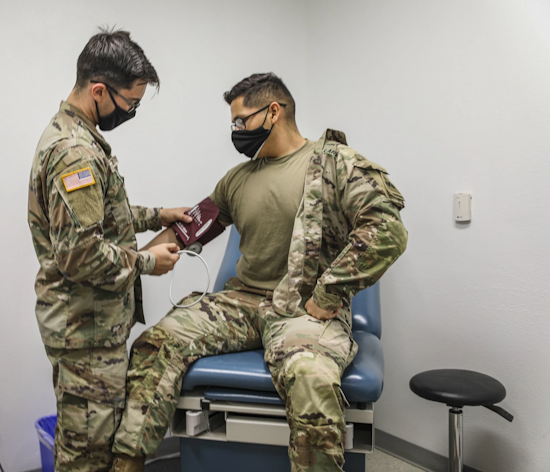
The Armed Services Vocational Aptitude Battery (ASVAB) is the examination used to determine education and relevant job skills.
The ASVAB tests subjects in various fields of education including science, math, and mechanical skills.
In general, the better individuals test on the ASVAB, the more military job occupations are available.
For this reason, it’s important to study and perform your best on the ASVAB.
Recruits must earn a minimum score of 101 on the Skilled Technical (ST) and 107 on the General Technical (GT) in order to qualify for Army Combat Medic.
Additionally, eligible recruits must meet the following basic requirements of military service:
- U.S. citizen
- Between the ages of 17 – 35
- High school diploma or GED
- No major law violations
- No serious medical concerns
The United States Army also has specific guidelines on personal appearance and physical fitness standards, including following the tattoo policy.
Later, recruits will have to attend multiple training courses including 10 weeks of Basic Training (more details, below).
Furthermore, many combat medics continue their education after working in the medical field in order to expand their knowledge and relevant job skills.
#3. Join the U.S. Armed Forces
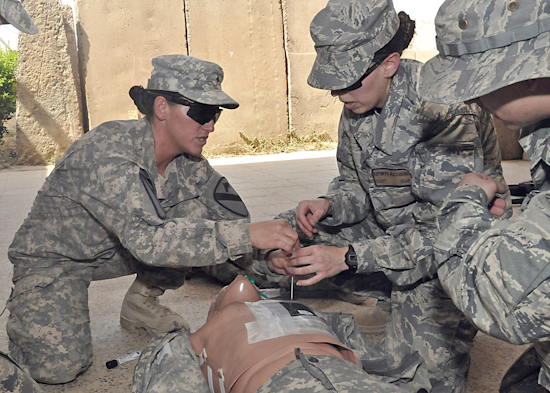
First, after consulting with a military recruiter and, secondly, after making sure you are eligible to become a combat medic – the next step is to enlist.
The U.S. Armed Forces will need copies of documents like a driver’s license, social security card, and high school diploma / GED.
Additionally, the military will designate a place and time for the physical fitness evaluation along with testing for the ASVAB.
Next, new recruits attend Army Basic Training where they are introduced to the physical standards of military service.
Moreover, basic training introduces recruits to the military lifestyle and what it takes to succeed in the Armed Forces.
The United States Navy has a similar job occupation working as a Navy SEAL Medic.
Furthermore, those interested in serving from the skies may want to consider joining Air Force Pararescue instead.
Regardless of your path, the U.S. Armed Forces offers many opportunities to serve as a combat medic.
#4. Basic Military Training
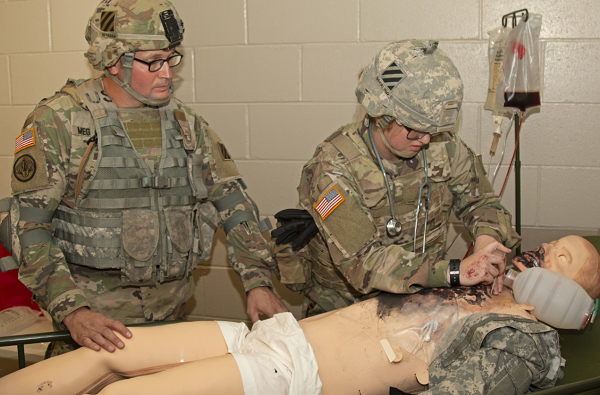
The U.S. Army is the most common path toward becoming a combat medic.
Army Combat Medic Specialists (MOS 68W) have a long and important history in the service branch.
Therefore, training for the military specialty is extensive and divided into 2 different rounds.
First, new recruits complete basic combat training, just like all new enlistees to the U.S. Army.
Army basic training lasts 10 weeks and ensures that candidates are physically and mentally prepared for service.
Secondly, Army combat medics complete Advanced Individual Training, also known as AIT.
The length of Advanced Individual Training (AIT) varies from 16 weeks to 1.5 years.
In general, it takes combat medics longer to complete advanced training compared to other military professions.
Nonetheless, the advanced training is designed to provide the knowledge and hands-on skills needed to thrive in the role.
As a result, Army combat medics acquire job skills like emergency medical care, patient care, and medical instructor/training.
#5. Advanced Combat Medic Training
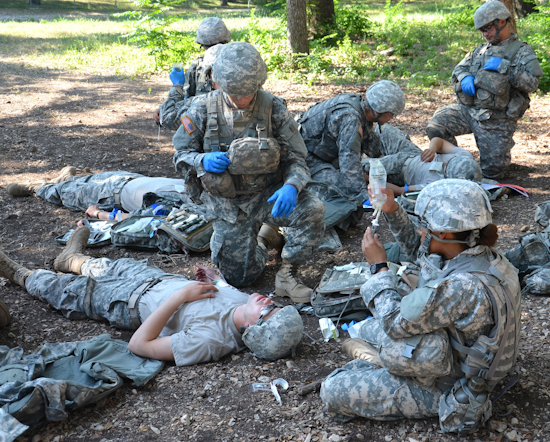
Advanced Military Training (AIT) is designed to provide specialized training.
Thus, the length of time it takes to complete advanced training varies widely, even between combat medics.
For example, some combat medics may only need to complete 16 to 32 weeks of training.
Meanwhile, others specializing in a very advanced medical field may need 1.5 to 2 years of education and training.
Advanced Individual Training introduces recruits to basic first aid, CPR, trauma medicine, and wound care.
Students earn most of their instruction at Joint Base San Antonio – Fort Sam Houston in Texas.
Then, after finishing the program, receive their first assignment in the military branch.
While the U.S. Army generally attempts to accommodate individual preferences, nothing is guaranteed.
Therefore, the Army may place new combat medics where they are most needed, regardless of choice.
Moreover, after being assigned a station or unit, their supervisor may direct additional training.
For example, this may include a combination of lectures, classroom assignments, seminars, and practical training.
Related Article – Army AIT: A List Of All 11 Locations + Training Summary
Inter-Service Physician Assistant Program (IPAP)
Additionally, some may participate in the Inter-service Physician Assistant Program (IPAP).
Those who have completed a bachelor’s degree and meet the program’s requirements are eligible for the training.
The purpose of the medical program is to work toward a master’s degree along with an officer’s commission.
Furthermore, students will have the opportunity to apply for civilian certification.
All in all, it takes 2 additional years to complete the IPAP program, which is also conducted at Fort Sam Houston.
In general, it’s not uncommon for combat medics to continue their education even after years of service.
The medical and science communities are constantly evolving and changing, making it necessary to continue studies and advance knowledge.
Accordingly, the U.S. Army features many opportunities for advancement and specialization, depending on where the medic serves and the area of medicine.
The Army has specialty medical programs in ophthalmology, dermatology, and immunology, to name a few.
Special Operations Combat Medic (SOCM) Training
Special Operations Combat Medic (SOCM) Training is also optional.
However, many students who have made it this far in training decide to take it a step further.
Special Operations Combat Medics serve in Special Forces units.
These units must operate on their own for long periods of time and often in foreign territory.
Consequently, SOCM medics must have a much broader area of medical knowledge.
Combat medics in Special Forces must be able to treat traumatic injuries as well as chronic injuries and illnesses.
Medics that operate within Special Forces units like the Army Rangers are given the skill identifier “W1”.
Accordingly, the degree and amount of training are much different from traditional combat medics.
Army SOCM medics must attend Airborne School and pass the Ranger Assessment and Selection Program (RASP).
The Army Airborne School is an intense, 3-week program conducted at Fort Moore, Georgia.
Airborne School, also known as “jump school,” introduces recruits to basic paratrooper training.
Meanwhile, the Army RASP program is designed to introduce recruits to what it takes to become an Army Ranger.
In the end, Army SOCM training is split into six, 6-week blocks of training with a 4-week clinical rotation.
The training courses are inter-service and therefore include members from other advanced units of the Air Force, Navy, and Marine Corps.
The 6 different training courses at SOCM include:
- Anatomy and Physiology
- Clinical Medicine
- EMT-Basic
- Trauma 1
- Trauma 2 / Trauma 3
Those who complete SOCM training have the medical knowledge and expertise equivalent of a nurse practitioner or Physician Assistant.
#6. Combat Medic Specialist Assignments
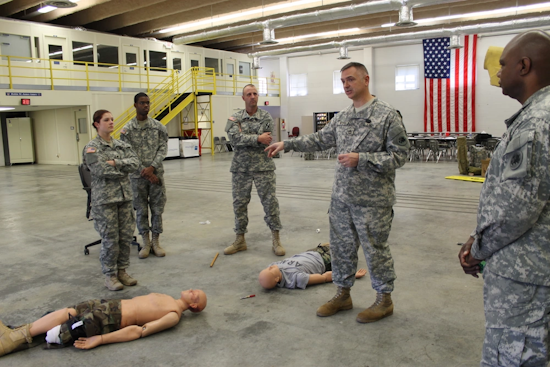
Army Combat Medic Specialists are generally assigned a station or unit after they complete Advanced Individual Training (AIT).
Therefore, it takes anywhere from 6 months to 2 years to complete the training necessary for the role.
The amount and length of medical training will depend on the area of medicine and specialty.
For this reason, combat medics are assigned to a number of different roles that range from front-line combat to working in a hospital.
Army Combat Medic Specialists serve many different roles including working as a flight paramedic or Licensed Practical Nurse (LPN).
The first assignment will determine the amount of training and what knowledge you still need to learn or develop.
Recruits are allowed to list their preferences, but nothing is guaranteed and assignments are sometimes made by the Army based on needs.
Nonetheless, performing well on the ASVAB and during training exercises will help improve your odds of getting a preferred placement.
Medic Assignment Locations / Sections
Army medics are frequently assigned to military hospitals and clinics.
Furthermore, military medics are also assigned to combat support hospital units and forward surgical teams.
Medics perform many different functions and roles in the service branch that range from administrative duties to laboratory and medical equipment operations.
Then, of course, are the notorious field units where medics work in combat situations.
Army Combat Medic Specialists serve in infantry, armored cavalry, and artillery units.
Moreover, they also work alongside combat engineers and military police.
Combat medics are traditionally assigned to 1 of 3 medical sections of the platoon:
- Ambulance / EVAC
- Combat Medic / Line Medic
- BAS / Treatment
The Ambulance / EVAC section functions much like the civilian world of ambulance personnel and EMT first responders.
They are responsible for transporting and taking care of patients until they reach a medical care facility.
Secondly, the Battalion Aid Station (BAS) / Treatment section functions much like an urgent care or a small emergency (ER) department.
Lastly, Combat Medics and Line Medics are more independent.
Traditionally, they belong to company headquarters and therefore are attached to other platoons.
For this reason, combat medics may oversee the medical care of anywhere from 30 to 60 soldiers.
More importantly, Army line medics must be able to diagnose and treat injured soldiers while under direct fire or other combat situations.
Army Combat Medic Specialists must carry whatever weapons and gear a regular soldier carries onto the battlefield.
Plus, they also load an aid bag and the other necessary medical supplies.
Consequently, Army combat medics are usually in fantastic shape and take very good care of their own bodies.
Conclusion
Are you curious or wondering how to become a combat medic?
There are several steps necessary to join the U.S. Army as a Combat Medic Specialist (MOS 68W).
Nonetheless, those who are driven and determined have an opportunity to thrive in this unique role of military service.
Army Combat Medics are much appreciated and valued among individual units as well as hospitals and clinics.
Therefore, medics serve a wide range of capacities within the service branch, including front-line operations.
The Army does not guarantee placement in any particular medical field, which is why it’s important to perform well on the ASVAB as well as during training exercises.
- Replacing Dog Tags: 6 Things You Need to Know - June 28, 2024
- Navy OAR Test Study Guide - June 24, 2024
- 10 Best Sniper Movies of all Time - June 20, 2024
Originally posted on August 15, 2023 @ 6:19 pm
Affiliate Disclosure: This post may contain affiliate links. If you click and purchase, I may receive a small commission at no extra cost to you. I only recommend products I have personally vetted. Learn more.
